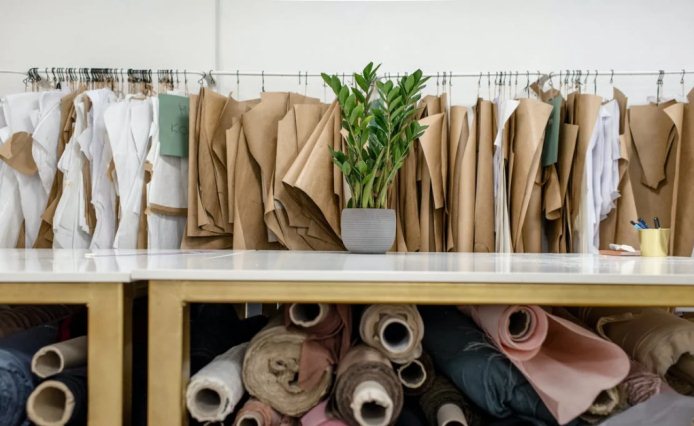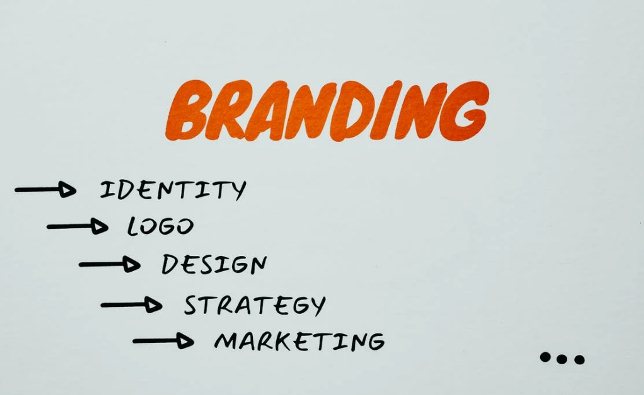How to Start a Clothing Line with No Experience?
How to start a clothing line with no experience?
Having no experience shouldn’t be an obstacle when it comes to starting a new business. There can be many challenges, but you just need to have the drive to start and let the process guide you along the way. Not every business must run with a large capital. It can start out small and grow over time as you gain more experience and clientele. The most important thing is that you must know how to make the best use of opportunities that come your way.
Additionally, you should also capitalize on assets that you have. Some people may be lacking in funding, but they have years of experience in the industry. These individuals have a great chance to succeed if given an equal chance. Starting a clothing line is no easy feat.
The fashion industry has been overwhelmed by a profusion of brands trying to infiltrate the space. Some are major brands that have established strong brand awareness. They account for a significant chunk of the market share, while smaller businesses are still trying to solidify their status or at least get things off the ground if the former is too much to ask.
Things to consider before starting a fashion brand
1. Be informed

There are many ways to increase your knowledge of the fashion industry. You can choose to be trained by professionals or do it on your own initiative. Either option can bring good results.
If you’re new to the fashion world, having a mentor is beneficial because they can share information they’ve cultivated from years of experience in the field. They can guide you through the startup’s launch and development.
Being self-taught isn’t wrong in itself, but you need to be more active in reading about business challenges that owners often encounter down the road. You should know how to leapfrog the obstacles and turn them into innovative objectives.
Also Read: How Much Does It Cost to Start a Clothing Line
2. Passion
Being passionate about what you do will propel you to success. Having a passion for fashion needs to be the foundation of your business because it will motivate you to work harder in order to achieve your goals. Enthusiasm is a great driving force as it shows that your heart is invested in the pursuit of your dream. It sends a wave of energy from the subconscious mind to the whole body.
But how do you figure it out?
Please repeat positive affirmations to yourself and trust them, like ‘I believe that I can turn my passion into a lucrative and fulfilling career’, or ‘I have been fixated with fashion for the longest time and every facet of it’, or ‘Being an owner of a fashion brand is one of my biggest dreams and I want to make it happen’.
3. Step out of your comfort zone
Don’t be too comfortable confined to your comfort zone, because it can keep you from making significant progress. Instead, don’t be afraid to take risks if they can lead you down an amazing path. We know it’s difficult to break down the mental barrier that tells you to stay in the same comfortable place. This is not a trait of a successful entrepreneur.
Build your confidence because if you can’t trust yourself, you won’t be able to trust others. Leaving the comfort zone can be perceived as keeping a steady pace towards development and making necessary adjustments in response to the inevitable changes. You must remember that the fashion industry is dynamic and undergoing constant evolution. Your option is to adapt or get eaten by the competition.
So, how to start a clothing line with no experience?
1. Find your brand identity

Building a brand identity is the cornerstone of business transformation because it dictates the direction you take. “Brand identity” can be described as things that encompass how a business portrays itself to its target audience.
When it’s strongly established, the general public will be able to tell if a company’s releases or inventions feel off-brand since they stray from its core values. Brand identity is all about what’s visible to the masses. And to maintain that, consistency is a rule you should abide by. Customers find trust in how you present your business. If they can relate to it, they will show their loyalty.
But if, let’s say, you break away from the tradition, your devoted fans will notice that. The worst thing that can happen is that they’ll cease their support because they think it doesn’t cater to them anymore. While changes are critical, making them recognizable to your long-time audience is also necessary, so that they don’t feel alienated.
2. Pick your business model
The next important step is to choose your business model because it determines how you will map out the strategy to bring your products to consumers. This will also affect production costs since some business models require large capital, while others don’t need as much funding to kickstart. This conceptual structure should be decided in the beginning so that you can get a competitive advantage that makes the business sustainable. Here are some alternatives to consider:
A. Print on demand
This is a business model in which a clothing line partners with a supplier to make products and ship them to buyers on a per-sale basis. Someone needs to place an order and complete the transaction before the manufacturer creates a piece of clothing based on their request.
The primary advantage of this business model is that it doesn’t demand high startup costs. There are many manufacturers willing to participate in this mutual agreement. You just need to find one that makes apparel products fitting for your business, such as hats, shirts, hoodies, etc. Don’t worry about labeling because they can take care of it as well.
B. Wholesale
This is an entirely different concept. Being a wholesaler means you buy items in bulk from a manufacturer and then sell them to retail stores. In this practice, you basically act as the middleman that connects both parties. Since this model often involves massive purchases, it often leads to a significant price reduction or a lower unit price.
Some manufacturers directly look for wholesalers to pass their products to retail stores. They do so to cut intermediaries out of the way in order to maximize the sum of expected profits. Meanwhile, as a wholesaler, profitability is highly influenced by its operating efficiency.
C. Cut and sew

This denotes a garment that has been altered based on the client’s requirements. The manufacturer is the party in charge of the production of clothing items and is the one who assists with distribution as private label products.
In this scenario, the client should purchase fabrics and other supplies necessary to create apparel. Compared to other models, cut and sew offers several benefits. First, products are completely customizable. Second, the private label gives them a sense of originality. And then, you can end up with sizable margins since the items have a unique quality.
D. Custom couture
The word “custom” in this business model is more specific because each item is tailor-made to meet the specific needs of each client. This requires a large amount of work to craft one product.
Not only that, it’s also costly and time-consuming. If you want to follow this plan, make sure you have the zeal and dedication because your customer pool will greatly be affected by the need for a heavy workforce for output.
3. Find your niche
Please find the right niche to work on because it plays a major role in the future success of your business. It can start out as something personal and then slowly turn into an empire. Many people started a business as a passion project, but they eventually became more invested in its growth because it picked up steam in sales and recognition.
Fashion is broad; you can discover smaller niches by listing out all the types of apparel stores usually sell. You can then focus on manufacturing specific types only. Once you’ve found your niche, do market research. Gathering information about your target market will give your business a leg up to face the competition. Without proper research, you’ll get left behind because it’s hard to rival larger brands in key markets.
4. Create a business plan
This is also mandatory, just like conducting market research. A business plan aims to summarize a business and outline all of its aspects. A plan is a tool to keep everything organized. Start by understanding your company’s values and objectives. Explore unique characteristics that set your brand apart from others on the market.
A good business plan should include an executive summary, financial records, management structure, and advertising methods. The biggest benefit of a business plan is that you can detect variables that you’ll probably ignore otherwise. Other than that, investors will also be more interested in providing funds if you have confidence in how you run your business, and a business plan is representative of that.
5. Calculate startup costs
There are several costs that make up the cost structure of a business. The first one is manufacturing costs, which reflects all costs incurred during the production of a product. Let’s say you want to produce 100 hoodies. Then the manufacturing costs are the sum you spend on all the supplies to make this quantity of products.
And then there are delivery costs, which indicate the amount of money a business needs to ship products. Shipping costs will largely depend on the volume of transactions they handle. The more goods purchased by buyers, the higher the delivery costs.
There are also marketing costs that arise as a result of your attempt to promote your brand. All expenses incurred for advertisements belong to marketing costs. Don’t forget to include the amount you use for website development as well.
6. Price products
To price a product, you must take into account the cost price, profit margin, administrative expenses, etc. These were just a few of the variables that should be included. If you’re curious about the exact formula of the calculation, you can find it on the internet.
Another consideration in pricing products is knowing your target audience. Is your brand a luxury brand that caters to consumers with a certain level of status, or is it targeted at another segment?
This greatly affects the way you should price your products, so think about it carefully.
7. Promote the clothing line
Online promotion is one popular marketing strategy in this digital age. If you want to focus on it, make a list of channels you’ll utilize to bring awareness of the brand.
But first, don’t forget to build a website to list all the products in your inventory. Use quality pictures with the help of a pro photographer. After that, maximize your reach on social media by promoting on Instagram, Facebook, etc., and hiring influencers to communicate with their followers.
How do I create a clothing logo?
A clothing logo is no different from any other brand logo. You must hire a graphic designer to create it unless you’re masterful at graphic design yourself.
There are many ways to meet up with these talented people. You can join freelance sites that attract self-employed individuals or find them from another source.
Can I start a clothing line with no money or experience?
Yes, we’ve explained how you can start a clothing business with zero experience. As for funding, any business would need that to some degree, but some options are more budget-friendly than others, just like we’ve mentioned earlier in this article.
Wrap up
After reading the insightful information we’ve just provided, we hope you know how to start a clothing line with no experience. Lacking experience doesn’t mean you can’t be resourceful. Learning by doing is one foundation of experiential knowledge. And going through everything from a first-person perspective isn’t the only option available when you want to increase knowledge of a particular subject matter.
You can gather information from various sources and use the lessons from your next attempt to become a successful entrepreneur in the fashion field. To maximize your chances of success, it’s better to tap into a smaller market because the competition is endogenously aggressive in key markets.
For this reason, narrowing down your niche and reach is a move that may help you thrive in this competitive industry. You can do it by focusing on a specific type of apparel. Some stores only sell one type of clothing, and they can still generate tons of sales because they’re committed to delivering quality.
There’s nothing wrong with targeting a smaller niche because, with the right strategy and plan, you can nail it and be a top performer there.



![10 Best Business Ideas for Women from Home [2022]](https://www.actionasempowerment.com/wp-content/uploads/2022/06/home-based-business-768x512.jpg)




